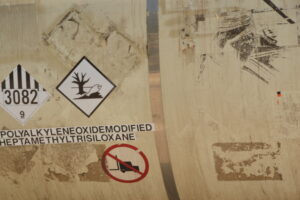Over the weekend I attended the Water and Wellness Conference hosted by the Ohio Valley Environmental Coalition, Doddridge County Watershed Association, and West Virginia Chapter of the Sierra Club in Buckhannon, West Virginia.
I started my journey to the conference around dawn on Saturday morning. As usual, Route 119 was full of big diesel rigs hauling materials for gas industrialization. Many were marked “residual waste.” Others were not so clearly identified. This steady stream of trucks continued as I traveled Interstate 79 and Route 33.
Finally, I made it to the conference and was uplifted by the energy—though I was also saddened by the stories from people who are suffering greatly from impacts of coal and gas extraction. Later, as I made my way home feeling impassioned by the collaboration, energy and pain expressed over the course of the weekend I decided to stop at a rest area along I-79 to stretch my legs. Not surprisingly, the truck parking area had several diesel haulers carrying unidentified fluids.
One of the trucks was labeled “Polyalkyleneoxide Modified Heptamethyltrisiloxane.”
Wait, what?
Why is there a dead fish pictured on the side of the truck along with this name? A quick internet search allowed me to download the materials safety data sheet (MSDS) about this chemical.
From the MSDS (emphasis added):
“WARNING! Aerosol harmful if inhaled. Causes eye irritation. Repeated ingestion may cause damage to the liver, kidneys, thyroid, and blood-forming system. Repeated inhalation of aerosol of the neat liquid may cause damage to the eyes, blood-forming system, kidneys, thymus, respiratory tract, and nasal cavity.”
This chemical is a surfactant and one of those “trade secrets” the industry does not voluntarily disclose on FracFocus.
According to the MSDS, direct exposure to humans and fish is toxic.
If this chemical is exposed to flame, it:
“gives off (emits):; Carbon oxides; Oxides of silicon.; Formaldehyde.; Carbon monoxide is highly toxic if inhaled; carbon dioxide in sufficient concentrations can act as an asphyxiant.; Acute overexposure to the products of combustion may result in irritation of the respiratory tract.; This product contains methylpolysiloxanes which can generate formaldehyde at approximately 300 degree Fahrenheit (150’C) and above, in atmospheres which contain oxygen. Formaldehyde is a skin and respiratory sensitizer, eye and throat irritant, acute toxicant, and potential cancer hazard.”
This is but one example of a toxic compound used in shale gas development that is not widely disclosed to the public. Frac fluid has a recovery rate of 30-70%. What happens to the rest of the fluid? How long will it take for Polyalkyleneoxide Modified Heptamethyltrisiloxane to get in my water? How would I know to test for this if it is not disclosed? How would my doctor know that potential issues with my liver, kidney, and thyroid may be linked to exposure to this chemical?
We must be vigilant and observant.
Keep your eyes peeled and until next time,
Kathryn


